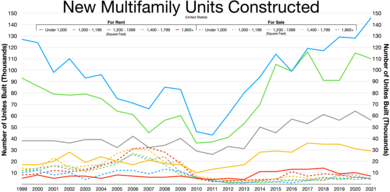Affordable Housing Financing has long been a challenge in the United States, especially as housing costs continue to rise across the country. The affordability crisis, exacerbated by urbanization, gentrification, and economic shifts, has left millions of Americans struggling to find affordable homes. One of the most recent efforts to address this issue was a $300 million initiative aimed at financing affordable housing development and preservation. However, this initiative has faced significant setbacks, delaying or halting much-needed affordable housing projects.
In this article, we will delve into the details of the $300 million affordable housing financing setback, its causes, implications, and what can be done to overcome it. We’ll explore the broader context of affordable housing in the U.S., the impact on local communities, developers, and low-income families, and what future policies and solutions might look like.
Understanding the $300 Million Affordable Housing Financing Initiative
The $300 million affordable housing financing initiative was designed to help increase the availability of affordable housing in high-demand areas. The program sought to provide loans, grants, and tax incentives to developers and municipalities for building new affordable housing projects, as well as for the preservation of existing affordable units at risk of being lost to market forces or neglect.
The $300 million was allocated as part of a larger federal push to combat the housing crisis. The initiative was expected to create thousands of new affordable housing units, particularly in cities and regions where the housing market is most strained. These funds were intended to target:
- Low-income housing construction: New affordable housing projects for families, seniors, and individuals experiencing homelessness.
- Preservation of existing affordable housing: Renovating older units to extend their viability and affordability for the long term.
- Mixed-use developments: Integrating affordable housing into broader urban development projects, including retail, office, and community spaces.
However, despite these ambitious goals, the financing initiative has encountered significant hurdles, which have delayed or even derailed some of the projects it was meant to fund.
Causes of the Setback
Several key factors have contributed to the delay of the $300 million affordable housing initiative. These include bureaucratic delays, legal and regulatory challenges, economic factors, and political shifts. Let’s explore each of these issues in more detail.
1. Bureaucratic Delays and Administrative Bottlenecks
Government programs designed to fund affordable housing are often bogged down by bureaucratic processes. The application and review process for affordable housing financing can be slow, requiring extensive documentation, reviews by multiple agencies, and compliance with various local, state, and federal regulations. This can lead to significant delays in disbursing funds and beginning projects.
In the case of the $300 million initiative, developers and municipalities experienced long waiting times for funding approval. Developers were often required to submit comprehensive plans and undergo lengthy review processes, and even after approval, funds were sometimes delayed due to logistical or administrative hurdles.
2. Legal and Regulatory Challenges
Affordable housing projects are subject to a variety of legal and regulatory challenges that can prevent them from moving forward. Zoning laws, building codes, environmental regulations, and local opposition can all create obstacles for developers.
- Zoning Issues: Many cities have zoning laws that make it difficult to build multi-family housing or low-income housing in desirable areas. In some cases, zoning laws are restrictive, limiting the areas where developers can build affordable housing. Even when projects are approved, developers can face opposition from local residents or neighborhood groups who argue that new affordable housing will increase traffic, lower property values, or change the character of the community.
- Building Codes and Permits: Affordable housing developments often need to adhere to a complex set of building codes and safety regulations, which can slow down the approval process. Additionally, some projects require multiple permits, inspections, and approvals from local and state governments, which can create delays.
- Legal Challenges and Community Pushback: Even after a project has been approved, developers may face legal challenges from local residents or advocacy groups who oppose the development. Lawsuits aimed at blocking projects can delay or prevent construction altogether. For instance, in some neighborhoods, residents may challenge affordable housing projects through legal channels, arguing that the developments could lead to overcrowding or change the socio-economic makeup of the area.
3. Economic Challenges: Rising Costs and Inflation
The economic climate has made it more difficult to build affordable housing. Rising construction costs, driven by inflation, supply chain disruptions, and labor shortages, have made it more expensive to complete affordable housing projects.
- Increased Construction Costs: The cost of building materials, such as lumber, steel, and concrete, has risen significantly in recent years. These price hikes are particularly impactful on affordable housing developments, where margins are already tight. As a result, developers often find that the financing allocated by the $300 million initiative is insufficient to cover the increased costs of construction.
- Labor Shortages: The construction industry has faced significant labor shortages, exacerbated by the COVID-19 pandemic and other economic factors. Shortages of skilled workers, such as electricians, plumbers, and carpenters, have delayed many projects and led to increased wages and higher costs.
- Supply Chain Disruptions: The global supply chain crisis has made it harder for developers to obtain necessary building materials. Shipping delays, shortages of materials, and rising fuel costs have all contributed to increased construction timelines and costs, making it harder for developers to stay within their original budgets.
4. Political Factors and Budget Cuts
Affordable housing initiatives are often subject to the whims of political priorities. As administrations change, so too do funding allocations and policy priorities. This means that funding for housing initiatives can be reduced, reallocated, or delayed due to political negotiations.
At the federal and state levels, political changes have sometimes resulted in budget cuts or shifts in priorities. Political opposition to public spending on affordable housing can also influence the allocation of funds. In some cases, elected officials may argue that funds should be directed to other areas, such as healthcare, education, or infrastructure.
In addition, political resistance at the local level can make it difficult to build new affordable housing. Some communities push back against affordable housing projects, arguing that they could change the character of the neighborhood or bring undesirable social issues.
Implications of the Setback
The delay or cancellation of the $300 million financing initiative has significant consequences for low-income families, developers, local governments, and entire communities. Let’s explore the implications of this setback in more detail.
1. Impact on Low-Income Families
The most direct consequence of the $300 million setback is the impact on low-income families who are in desperate need of affordable housing. In many cities, the demand for affordable housing far exceeds the supply, and rents have been rising steadily. As a result, low-income families are often forced to move to areas that are farther away from their jobs or families, or they may be forced into substandard housing conditions.
The $300 million initiative was expected to provide new affordable units, particularly in areas where rents have risen rapidly due to gentrification or market demand. Delays in funding mean that these families will have fewer options and may face further displacement.
2. Homelessness and Housing Instability
One of the most significant consequences of the delay in affordable housing funding is the strain it places on homelessness services. Affordable housing programs are essential in preventing homelessness and housing instability. Without these programs, more individuals and families may experience homelessness or be forced to live in overcrowded or unsafe conditions.
In cities across the U.S., homelessness has reached crisis levels, and without new affordable housing units to replace those lost to market forces or neglect, the situation is likely to worsen. Homeless shelters and social services are already overburdened, and the delayed financing exacerbates the pressure on these systems.
3. Impact on Local Economies
Affordable housing developments are often a boon to local economies. New housing projects create construction jobs, stimulate local businesses, and contribute to the tax base. Without these developments, local economies may miss out on important economic benefits.
Moreover, affordable housing can help revitalize neighborhoods that have been neglected or left behind by market forces. By providing a stable and affordable place to live, these developments can help stabilize communities and encourage further investment. The delayed financing of affordable housing projects means that many neighborhoods will continue to face economic stagnation.
4. Developer Confidence and Future Investments
The setback in affordable housing financing also has a negative impact on developer confidence. When government initiatives face delays or cuts, developers are less likely to commit to new projects. Developers rely on government support to help bridge financing gaps, and delays or reductions in funding can make projects financially unfeasible.
In addition, the uncertainty surrounding funding for affordable housing projects may discourage private investors from entering the market. Without the necessary capital and incentives, affordable housing development may slow down, further deepening the housing crisis.
5. Political and Public Backlash
Politically, the delay in funding may lead to public backlash, particularly from advocates for affordable housing. Elected officials who supported the initiative may face criticism from constituents who were hoping to benefit from the new housing units. On the other hand, opponents of public housing may use the setback as an opportunity to argue against further investments in affordable housing.
6. Social Consequences: Increasing Inequality
The lack of affordable housing exacerbates income inequality, forcing low-income families to live in less desirable conditions. As housing costs increase, the gap between high-income and low-income households grows. This leads to greater social stratification, which in turn can create further challenges related to education, employment, and overall quality of life.
Moving Forward: Addressing the Setback
Despite these setbacks, there are several steps that can be taken to address the affordable housing crisis and overcome the challenges faced by the $300 million initiative.
1. Streamlining Government Processes
Reducing bureaucratic delays and streamlining government processes is essential for making affordable housing initiatives more efficient. One approach could be to simplify the application and approval processes for developers, making it easier to obtain financing and permits. This would help reduce the amount of time it takes to start projects and speed up the delivery of affordable housing.
2. Updating Zoning Laws and Regulations
Local governments need to consider updating zoning laws to make it easier to build affordable housing in high-demand areas. This could include revising density restrictions, allowing for more mixed-use developments, or incentivizing the construction of affordable housing near public transportation hubs. By making zoning laws more flexible, communities can encourage more affordable housing development.
3. Expanding Private and Public Partnerships
Public-private partnerships (PPPs) can play a critical role in financing affordable housing projects. By leveraging both public and private funding sources, these partnerships can help fill financing gaps and bring more affordable units to market. Tax incentives, low-interest loans, and other financial tools can be used to encourage private investment in affordable housing.
4. Political Commitment to Affordable Housing
Political leaders must prioritize affordable housing and commit to long-term solutions. This could involve increasing the overall funding for affordable housing programs, committing to building more affordable units, and supporting policies that protect renters and prevent displacement.
5. Addressing the Broader Economic Factors
To reduce the cost of building affordable housing, policymakers could focus on addressing the underlying economic factors driving construction price hikes. This might involve investing in infrastructure to improve supply chains, training a new generation of construction workers, and encouraging the use of more cost-effective materials.
Conclusion
The setback of the $300 million affordable housing financing initiative highlights the challenges facing the United States in addressing the growing demand for affordable housing. While the delays are unfortunate, they also provide an opportunity to reassess the strategies and systems used to finance affordable housing development.
Affordable housing is not just a policy issue; it’s a human issue that affects millions of families across the country. It is imperative that policymakers, developers, and communities continue to work together to find solutions that provide stable, affordable housing for all Americans.
Through improved government processes, legislative action, public-private partnerships, and a focus on economic solutions, we can create a future where affordable housing is accessible to everyone. The journey ahead is challenging, but it is one worth taking to ensure that every American has a safe, affordable place to call home.also read this networksights.com








Leave a Reply